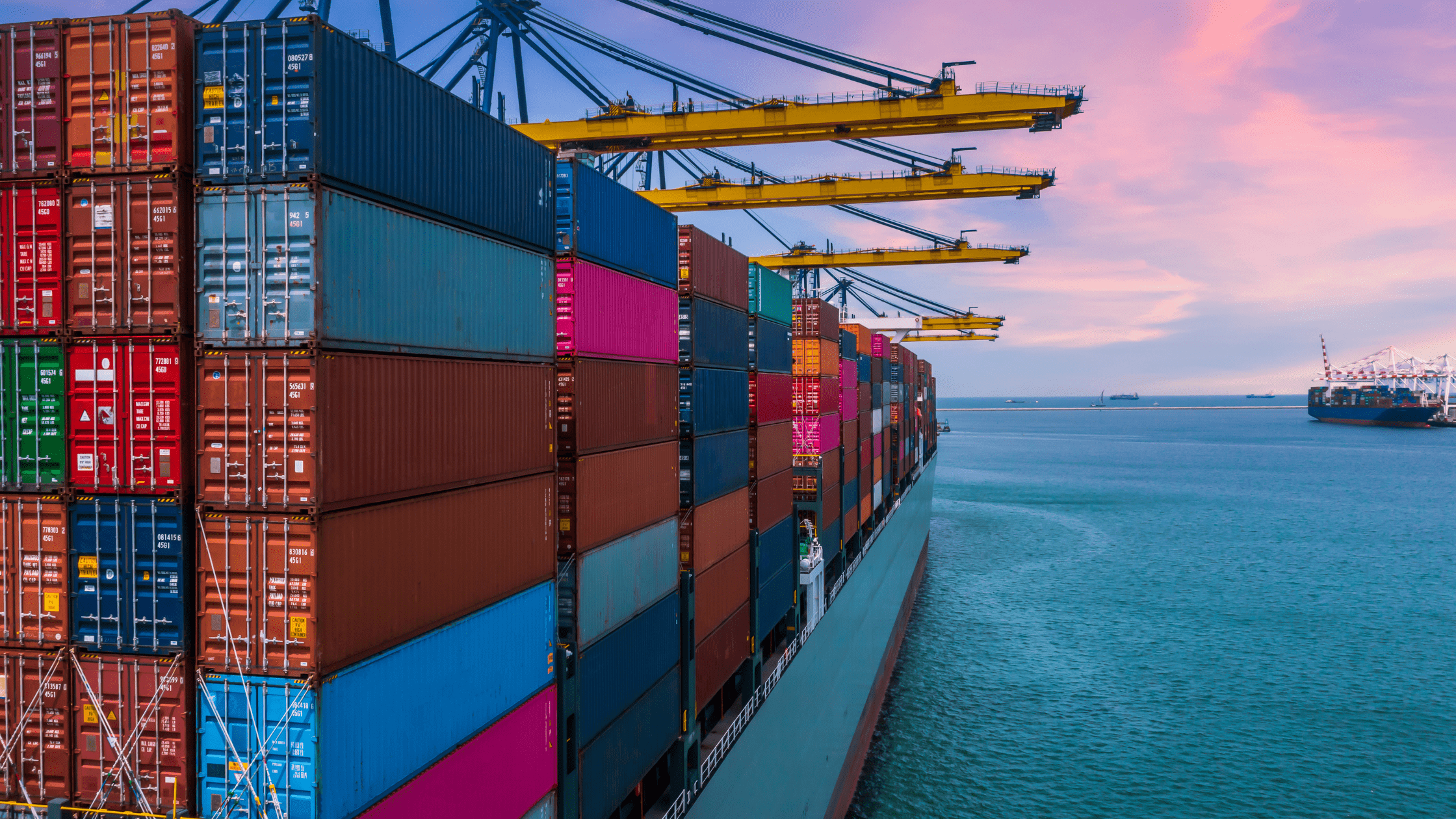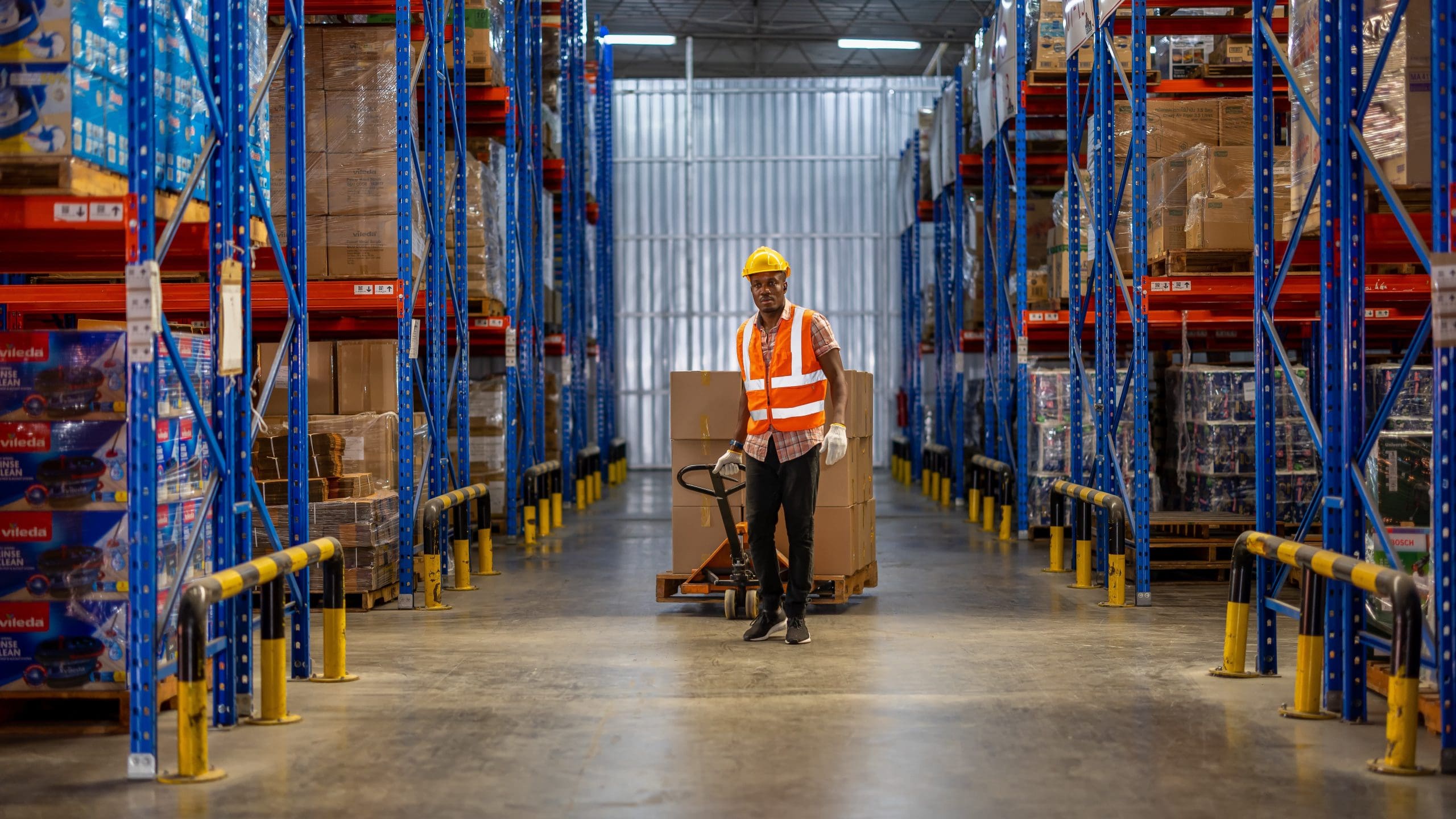Ecommerce businesses that import products internationally are typically concerned with two things:
- The speed at which the products will arrive at their warehouse
- The impact on their cash flow
The journey of a large shipment from China to the US doesn’t simply leave a warehouse and arrive at your business’s doorstep. Before reaching you, it must navigate through US Customs and Border Protection (CBP). This process could result in your package being stuck in customs, significantly delaying delivery times and tying up financial resources.
In-bond shipments offer a solution by allowing goods to move through countries without immediate appraisement and customs clearance — saving both time and money. ShipBob specializes in simplifying this process, helping businesses avoid the common pitfalls of international shipping.
In this article, we’ll discover the benefits of in-bond shipments, what challenges might arise, and how ShipBob can help navigate the entire process.
What are in-bond shipments?
In-bond shipments involve goods that enter a country’s destination port but don’t immediately go through customs. Instead, these items are stored in a bonded warehouse or moved to another customs-controlled area within the same country, delaying the payment of duties and taxes until they’re ready for final importation. This method is key for businesses looking to manage inventory flexibly and save on upfront costs.
The process demands careful attention to customs regulations to ensure smooth operations, such as:
- Accurate documentation: Every in-bond shipment must be accompanied by detailed records of the goods, including their origin, destination, and the reason for their in-bond status.
- Timely reporting: Businesses must report the movements of in-bond goods to customs authorities at every stage, from arrival to departure or final importation.
- Compliance with bonded facilities: Goods must be stored or transported only through facilities authorized by customs. These locations ensure that in-bond items are secure and properly managed until duties are paid or they’re exported.
Key benefits of opting for in-bond shipments
Opting for in-bond shipments unlocks a few benefits for businesses involved in international trade.
Efficient transit
In-bond shipments are designed to cut through the red tape that typically slows down international shipping, creating a more efficient route for goods to travel. It allows goods to bypass traditional storage and wait times at ports, moving directly through or to another customs-controlled area.
This results in a reduction in transit times and can help streamline a business’s logistics.
Fewer customs formalities
One of the most daunting aspects of international shipping is navigating the complexities of customs regulations. In-bond shipments offer relief by allowing goods to be transported to their destination or exported without undergoing the full customs clearance process immediately upon entry.
This deferral of customs formalities until the in-bond cargo reaches its final destination or is ready for exportation reduces the administrative burden.
Avoiding duties and taxes
A major advantage of in-bond shipments is the ability to defer the payment of import duties and taxes until the goods are officially entered into the commerce of the importing country.
This deferral can improve a business’s cash flow — freeing up capital that can be used elsewhere in the business. For companies operating on thin margins or those looking to optimize their financial resources, this aspect of in-bond shipments can be particularly beneficial.
Consolidation and deconsolidation
In-bond shipments provide the flexibility to consolidate goods from multiple suppliers into one shipment at the port of destination, and then deconsolidate them closer to their final destination. This process can lead to savings on shipping and handling costs and streamline the logistics process.
Strategic inventory management
Utilizing in-bond shipments and bonded warehouses allows businesses to optimize their inventory management. Delaying customs clearance gives brands the flexibility to sync inventory levels with demand, ensuring products are available when they’re needed but not tying up capital when they’re not.
Improved supply chain visibility
The integration of advanced tracking and management systems in in-bond shipments provides businesses with real-time supply chain visibility. This enhanced visibility allows for better decision-making and more accurate forecasting.
By knowing exactly where their goods are at any given time, businesses can manage their inventory more effectively, reduce lead times, and improve overall supply chain efficiency.
Guide to the in-bond shipment process
Navigating the in-bond shipment process might seem daunting, but with the right guidance, it becomes a strategic advantage for your business. This section provides a step-by-step walkthrough, from initiation to completion.
Initiating the in-bond shipment
To initiate the in-bond process, several key shipping documents are required from the in-bond filer:
- In-bond application: This application must be provided to CBP via an electronic data interchange (EDI) system and requires a description of the merchandise, the six-digit HTSUS number, container seals and number, quantities, and U.S. port destination.
- Completion of in-bond entry (CBP form 7512): This document outlines the freight’s entry point into the U.S., its final destination, the consignee details, foreign ports it will pass through, and estimated departure or export dates.
- Customs bond: A bond must be posted with CBP to guarantee that duties, taxes, and any penalties incurred will be paid. This will either be a transportation and exportation bond (T&E) or an immediate transportation bond (IT).
- Bill of lading: This functions as a receipt for the goods shipped, detailing the type, quantity, and destination of the cargo. It serves as a contract between the shipper and the carrier, outlining the terms for transporting the goods to their in-bond destination.
- Packing list: This complements the Bill of Lading by providing a detailed inventory of the shipment’s contents. It includes information on the packaging of each item, making it easier for customs to verify and inspect the goods upon arrival.
ShipBob assists businesses through these initial hurdles, offering expertise to navigate the complexities of compliance and documentation.
Transportation and tracking
Once the in-bond shipment has reached a country’s port of entry, attention shifts to the transportation phase.
A bonded carrier is a transportation company authorized to move goods under bond from the port of entry to another customs-controlled area or bonded warehouse. These specialized carriers ensure the compliant in-bond movement of goods within the country, adhering to strict customs regulations.
ShipBob’s use of advanced tracking technology is vital in this phase, offering businesses real-time visibility into their shipments. This technology not only provides updates on the location and status of the shipment but also helps identify and resolve any potential delays or issues that may arise during transit.
Completing the in-bond process
The final leg of the in-bond shipment’s journey involves customs clearance and delivery to the final destination. This stage involves the formal entry of goods into the commerce of the destination country.
ShipBob simplifies this process by coordinating with experienced customs brokers, who ensure that all customs regulations are adhered to and that the necessary duties and taxes are calculated and paid.
Navigating challenges in in-bond shipments
In-bond shipments present a unique set of challenges, from regulatory compliance to complex logistics. Navigating these challenges alone is doable but can be daunting, especially for businesses new to international fulfillment. Whether you choose to do it alone or partner with an experienced logistics provider like ShipBob, understanding the potential challenges of the process is crucial.
Regulatory compliance and updates
Staying compliant with international shipping regulations is crucial for businesses to avoid costly delays and penalties. These rules are not static; they evolve in response to new security measures, trade agreements, and political climates.
ShipBob brings to the table an in-depth understanding of these regulations, ensuring businesses remain compliant regardless of how rules change. By monitoring regulatory updates closely and adjusting processes accordingly, ShipBob provides businesses with the necessary guidance to adapt.
Handling complex logistics with ease
In-bond shipments, with their multiple steps and detailed requirements, present a complex logistical challenge. From accurately filling out and submitting the necessary paperwork to navigating customs procedures and ensuring timely delivery, each step requires expertise.
ShipBob helps manage these complexities by handling the paperwork, coordinating with customs, and ensuring that shipments meet all regulatory requirements. ShipBob’s expertise in logistics simplifies the process of in-bond shipments, making international shipping more accessible and less burdensome.
Choose ShipBob for your in-bond shipment needs
The benefits of in-bond shipments are clear. They help improve transit efficiency, delay the payment of customs fees, and provide businesses with greater flexibility in managing their inventory and supply chain.
Choosing ShipBob for your in-bond shipment needs means partnering with a leader in logistics innovation so you can navigate the complexities of international trade with ease. Powered by a blend of expert guidance, efficient processes, and advanced technology, ShipBob ensures that your in-bond shipments are managed with precision.
“Canada is our biggest market outside of the US. We were shipping from our Chicago area warehouse to Canada for a long time. We were missing out on revenue by taking on import fees and taxes. We wanted to outsource fulfillment there to reclaim some of that.
We also wanted to help improve customer satisfaction by speeding up their order delivery time and avoiding those frustrating customs hold-ups. Being in ShipBob’s Canadian fulfillment center has been great for us.”
Adam LaGesse, Global Warehousing Director at Spikeball
Additionally, If you’re importing products from a high-tariff category and shipping from US, to US-based customers, ShipBob can help save on import costs through Section 321 fulfillment.
By utilizing ShipBob’s Section 321 warehouses located in Mexico or Canada to fulfill US orders, you can substantially decrease — or even completely avoid — tariffs on customers’ shipments valued at less than $800. This approach not only mitigates costly import expenses but also streamlines the delivery process, providing a cost-effective solution for managing international shipments.
What’s more, ShipBob offers a DDP shipping option so your customers are never surprised by an unexpected duty or tax fee, making the international shipping experience smoother.
With ShipBob, you benefit from personalized guidance, a robust logistics network, and tech that shines above the rest to simplify ecommerce shipping — no matter where your products are headed.
Get started with ShipBob
If you’re ready to get started with ShipBob, request a quote to connect with our team.
In-bond shipment FAQs
Below are the most frequently asked questions about in-bond shipments.
What are the benefits of choosing in-bond shipments for international trade?
In-bond shipments offer numerous benefits, including cost savings, improved cash flow, strategic inventory management, and enhanced supply chain visibility. These advantages make in-bond shipments a valuable option for importing goods at the US border from a foreign country.
What role does ShipBob play in managing in-bond shipments?
ShipBob helps in every step of the in-bond shipping process. From the initial setup and documentation to transportation, tracking, and final customs clearance. ShipBob’s expertise and advanced platform simplify the complexities of in-bond shipments, offering businesses a streamlined approach to international shipping.
Can in-bond shipments be tracked and monitored?
Yes, with ShipBob’s platform, businesses can track and monitor their in-bond shipments. This visibility allows for better decision-making, timely adjustments, and enhanced supply chain efficiency.



